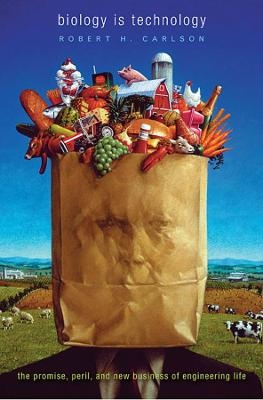
Biology Is Technology
The Promise, Peril, and New Business of Engineering Life
Seiten
2011
Harvard University Press (Verlag)
978-0-674-06015-9 (ISBN)
Harvard University Press (Verlag)
978-0-674-06015-9 (ISBN)
In Biology Is Technology, author Robert Carlson offers a uniquely informed perspective on the endeavors that contribute to current progress in the science of biological systems and the technology used to manipulate them.
Technology is a process and a body of knowledge as much as a collection of artifacts. Biology is no different—and we are just beginning to comprehend the challenges inherent in the next stage of biology as a human technology. It is this critical moment, with its wide-ranging implications, that Robert Carlson considers in Biology Is Technology. He offers a uniquely informed perspective on the endeavors that contribute to current progress in this area—the science of biological systems and the technology used to manipulate them.
In a number of case studies, Carlson demonstrates that the development of new mathematical, computational, and laboratory tools will facilitate the engineering of biological artifacts—up to and including organisms and ecosystems. Exploring how this will happen, with reference to past technological advances, he explains how objects are constructed virtually, tested using sophisticated mathematical models, and finally constructed in the real world.
Such rapid increases in the power, availability, and application of biotechnology raise obvious questions about who gets to use it, and to what end. Carlson’s thoughtful analysis offers rare insight into our choices about how to develop biological technologies and how these choices will determine the pace and effectiveness of innovation as a public good.
Technology is a process and a body of knowledge as much as a collection of artifacts. Biology is no different—and we are just beginning to comprehend the challenges inherent in the next stage of biology as a human technology. It is this critical moment, with its wide-ranging implications, that Robert Carlson considers in Biology Is Technology. He offers a uniquely informed perspective on the endeavors that contribute to current progress in this area—the science of biological systems and the technology used to manipulate them.
In a number of case studies, Carlson demonstrates that the development of new mathematical, computational, and laboratory tools will facilitate the engineering of biological artifacts—up to and including organisms and ecosystems. Exploring how this will happen, with reference to past technological advances, he explains how objects are constructed virtually, tested using sophisticated mathematical models, and finally constructed in the real world.
Such rapid increases in the power, availability, and application of biotechnology raise obvious questions about who gets to use it, and to what end. Carlson’s thoughtful analysis offers rare insight into our choices about how to develop biological technologies and how these choices will determine the pace and effectiveness of innovation as a public good.
Robert H. Carlson is a Principal at Biodesic LLC.
* Acknowledgments * What Is Biology? * Building with Biological Parts * Learning to Fly (or Yeast, Geese, and 747s) * The Second Coming of Synthetic Biology * A Future History of Biological Engineering * The Pace of Change in Biological Technologies * The International Genetically Engineered Machines Competition (iGEM) * Reprogramming Cells and Building Genomes * The Promise and Peril of Biological Technologies * The Sources of Innovation and the Effects of Existing and Proposed Regulations * Laying the Foundations for a Bio-Economy * Of Straightjackets and Springboards for Innovation * Open Source Biology, or Open Biology? * What Makes a Revolution? * Notes * Index
| Erscheint lt. Verlag | 15.5.2011 |
|---|---|
| Zusatzinfo | 19 line illustrations, 7 tables |
| Verlagsort | Cambridge, Mass |
| Sprache | englisch |
| Maße | 156 x 235 mm |
| Themenwelt | Naturwissenschaften ► Biologie |
| Technik ► Umwelttechnik / Biotechnologie | |
| Wirtschaft ► Betriebswirtschaft / Management | |
| Wirtschaft ► Volkswirtschaftslehre ► Mikroökonomie | |
| ISBN-10 | 0-674-06015-6 / 0674060156 |
| ISBN-13 | 978-0-674-06015-9 / 9780674060159 |
| Zustand | Neuware |
| Haben Sie eine Frage zum Produkt? |
Mehr entdecken
aus dem Bereich
aus dem Bereich
Wirtschaftszusammenhänge verstehen und mitreden können
Buch | Softcover (2023)
Wiley-VCH (Verlag)
19,99 €
die psychologischen Determinanten menschlicher Entscheidungen
Buch | Softcover (2024)
Kohlhammer (Verlag)
39,00 €


